How Long Does It Take for Your Uterus to Shrink After Pregnancy?
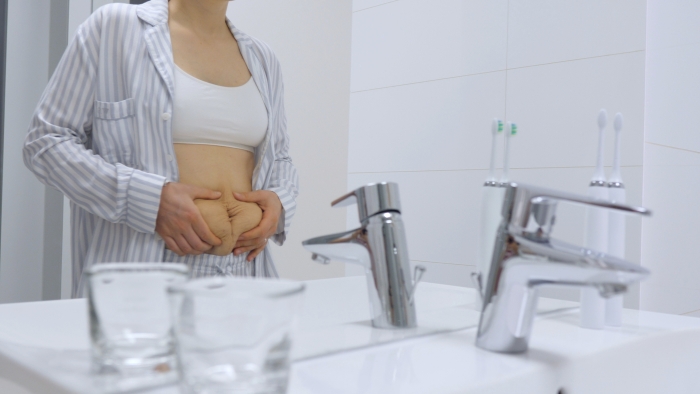
- The uterus can grow up to 5 times bigger than normal during pregnancy.
- Your uterus should return to normal 6-8 weeks after delivery.
- Breastfeeding and skin-to-skin time will help your uterus shrink more quickly.
- If your uterus is not shrinking or you experience excessive postpartum bleeding, notify your family doctor right away.
Your body goes through many changes during and after pregnancy. One of the most drastic changes you’ll go through is the size of your uterus. Your uterus can grow up to 5 times its regular size during pregnancy and your uterine walls become much thicker than normal. Your uterus will return to normal during your postpartum recovery.
While your uterus has 9 months to grow to accommodate your baby, it does not take quite that long to return to its pre-pregnancy size.
New moms may wonder, exactly how long does it take your uterus to shrink after pregnancy?
Why Should the Uterus Shrink After Delivery?
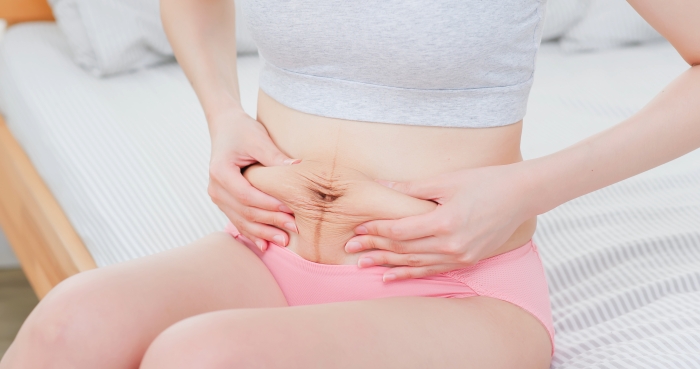
The scientific name for uterus shrinking is uterine involution. Uterine involution refers to the process of your uterus returning to its pre-pregnancy size and shape.
Comfort
Did you know that your growing uterus is the reason for many of the discomforts associated with pregnancy? Having a uterus the size of a watermelon makes it hard for your other internal organs to function normally.
Pressure on the diaphragm causes shortness of breath, pressure on the stomach can cause indigestion, and pressure on the bladder leads to constant trips to the bathroom.
When your uterus shrinks during the postpartum period, your digestion, breathing, and number of trips to the bathroom should all return to normal.
Confidence
Mothers often struggle with the changes their body goes through during pregnancy. Difficulty losing weight, weak abdominal muscles, diastasis recti, and c-section scars can all contribute to a new mother’s baby blues or even postpartum depression.
General Hospital Psychiatry11. Simon, G. E., Ludman, E. J., Linde, J. A., Operskalski, B. H., Ichikawa, L., Rohde, P., Finch, E. A., & Jeffery, R. W.. Association between obesity and depression in middle-aged women. General Hospital Psychiatry. 2008;30(1), 32–39. https://doi.org/10.1016/j.genhosppsych.2007.09.001 published a study showing that “depression is strongly and consistently associated with obesity.” Postpartum weight loss may help to improve women’s symptoms of postpartum depression.
While mothers should focus on maintaining a healthy diet and taking care of their newborns, many new moms feel pressured to return to their pre-pregnancy weight and hope to have a flat postpartum belly soon after delivery.
Return of Fertility
Besides feeling more comfortable, uterine involution is necessary to resume normal menstruation and re-establish your fertility. It is important to remember to use your chosen method of birth control if you are not ready for another baby.
Some postpartum women become fertile quickly after giving birth, and getting pregnant just a few weeks after delivery is possible.
Overall Uterine Health
An article published in Seminars in Perinatology22. Breathnach, F., & Geary, M.. Uterine atony: Definition, prevention, nonsurgical management, and uterine tamponade. Seminars in Perinatology. 2009;33(2), 82–87. https://doi.org/10.1053/j.semperi.2008.12.001 describes a uterus that fails to contract immediately after giving birth as “uterine atony,” also called a “boggy uterus”. This can indicate dangerous problems such as impending postpartum hemorrhage or infection.
Complications associated with uterine atony include:
- Postpartum hemorrhage
- Retained placenta
- Infection
When Will Your Uterus Start to Shrink?

Your uterus should begin to shrink immediately after delivery of the placenta. During labor, uterine contractions help you push your baby and placenta out during vaginal birth. After you deliver, these uterine contractions continue in order to stop postpartum bleeding and help your uterus return to normal size.
When you are in the hospital, your caregivers will frequently check your uterus to make sure that it is firm.
Over the next few weeks, your uterus will continue to shrink until it returns to normal size.
What Does It Feel Like When Your Uterus Shrinks?
As your uterus shrinks, you will experience some discomfort. This is frequently referred to as “afterpains.” Afterpains feel similar to the cramps you feel during your menstrual period.
Afterpains might be worse during breastfeeding since your uterus contracts harder while you are feeding your new baby, using your breast pump, or even cuddling with your newborn.
How Long Does It Take for Your Uterus to Shrink After Delivery?
Your uterus goes through the most dramatic change in size during the first week postpartum. After that, your uterus gradually continues to shrink. Your uterus should return to near its pre-pregnancy size by about 8 weeks after delivery.
Your uterus should shrink by about 1-2 cm per day until it returns to its normal size.
| Week | Uterus Weight | Uterus Height |
| Immediately after delivery | 1000 grams | Just below the belly button |
| One week | 500 grams | 1-2 cm per day smaller |
| Two weeks | 300 grams | 1-2 cm per day smaller |
| Four weeks | 100 grams | 1-2 cm per day smaller |
| Eight weeks | 60 grams | Just above the pelvic bone |
How to Help Your Uterus Shrink After Birth

There are a few things you can do to help your uterus shrink after birth. If your uterus fails to contract and shrink immediately after delivery, you will need medical intervention. If your postpartum uterus remains large after several days or weeks, you can use postpartum care tips at home.
Immediately After Birth
Uterine atony means your uterus is not contracting well after your delivery.
According to the International Journal of Obstetric Anesthesia33. Balki, M., & Wong, C. A.. Refractory uterine atony: Still a problem after all these years. International Journal of Obstetric Anesthesia. 2021;48, 103207. https://doi.org/10.1016/j.ijoa.2021.103207, “Postpartum hemorrhage is a leading cause of maternal morbidity and mortality, and uterine atony is the leading cause of postpartum hemorrhage.” Risk factors for uterine atony include:
- Induced or augmented labor
- Preeclampsia
- Chorio-amnionitis
- Obesity
- Multiple gestations
- Polyhydramnios
- Prolonged second stage of labor
If you experience uterine atony in the hospital, you will need the help of medical professionals. They may use medicine or manual pressure to help your uterus contract. Medical interventions may include uterine massage or intravenous pitocin.
Weeks After Birth
If you are safely home from the hospital but feel like your uterus is not returning to its pre-pregnancy size, you can do a few things to speed the process along.
1. Breastfeed
A hormone called oxytocin is mostly responsible for helping your uterus continue to shrink after you deliver your baby. Breastfeeding is one of the best ways to increase oxytocin and help your uterus shrink more rapidly.
Even if you choose not to breastfeed, there are other ways to increase oxytocin in your body.
2. Skin-to-skin time
If you choose not to breastfeed, you can help your body produce more oxytocin with skin-to-skin contact. A study published in Biological Research for Nursing44. Vittner, D., McGrath, J., Robinson, J., Lawhon, G., Cusson, R., Eisenfeld, L., Walsh, S., Young, E., & Cong, X.. Increase in oxytocin from skin-to-skin contact enhances development of parent–infant relationship. Biological Research For Nursing. 2017;20(1), 54–62. https://doi.org/10.1177/1099800417735633 showed that not only does skin-to-skin contact help boost oxytocin levels, but it also decreases stress.
Laying next to or cuddling with your partner can also increase the release of oxytocin. Any contact with another person you care about can have a similar effect as skin-to-skin time with your baby.
3. Nipple stimulation
Using a breast pump is another way to trigger the release of oxytocin in the body. As you pump breast milk, your uterus will contract and shrink. Do not pump excessively in an attempt to help your uterus shrink, however. If you experience nipple pain or soreness, take a break from your breast pump.
4. Red raspberry leaf tea
Some people recommend drinking red raspberry leaf tea to help improve uterine tone. This tea is believed to help the uterus contract, which is why it is sometimes used as an alternative medicine to induce labor.
The Journal of Midwifery and Women’s Health55. Simpson, M., Parsons, M., Greenwood, J., & Wade, K.. Raspberry leaf in pregnancy: Its safety and efficacy in Labor. Journal of Midwifery & Women’s Health. 2001;46(2), 51–59. https://doi.org/10.1016/s1526-9523(01)00095-2 published a study showing that consumption of red raspberry leaf doesn’t shorten the first stage of labor but can shorten the second stage. Still, while they concluded that “no significant relationship was found between [raspberry leaf herb] tablet consumption and birth outcomes,” it was also found “to cause no adverse effects for mother or baby,” meaning that even though the effect is limited, there certainly aren’t any known risks to taking raspberry leaf. The study researchers suggest follow-up studies using different dosage levels.
5. Postpartum girdle
While wearing a girdle does not promote postmortem weight loss, it can help support your abdominal muscles while you recover from delivery. Special supportive underwear or an abdominal binder is essential for your postpartum recovery, especially after a c-section delivery.
Worrying About Uterus Shrinking
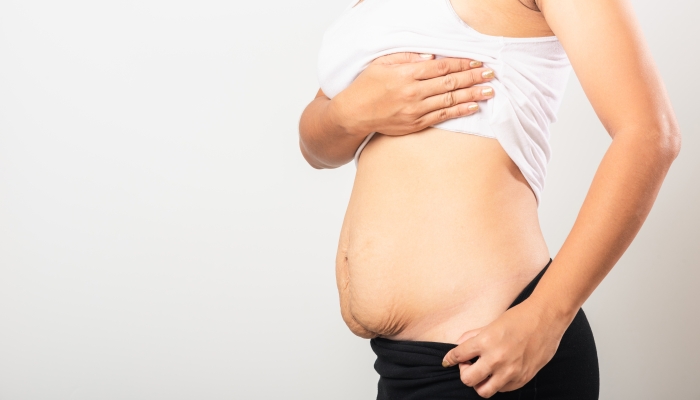
Your uterus should return to its pre-pregnancy state 6-8 weeks after a c-section or vaginal delivery. While you should be patient while you wait for your body to recover fully, call your healthcare provider if you experience any of these symptoms:
- Blood clots larger than a golf ball
- Excessive vaginal bleeding
- Intolerable afterpains
- Light-headedness or dizziness
Some of these signs can indicate postpartum hemorrhage, which is possible for up to 12 weeks after you deliver your baby. Postpartum hemorrhage is a serious condition that can be fatal if left untreated.
If you experience any of these symptoms, a medical professional can help determine whether you need more serious medical care.
FAQs
When will you get your period after giving birth?
Each mother has a different experience with hormonal shifts after pregnancy. Typically, your period will return 6-8 weeks after you deliver. If you are breastfeeding, it may take longer for your period to return.
It is possible to get pregnant before you get your period back after pregnancy. Make sure to use your preferred method of birth control if you aren’t ready to get pregnant.
When is it safe to have sex after giving birth?
You should wait until your medical provider clears you for sexual activity after giving birth. Having sex too soon after your baby is born might be painful, cause excessive bleeding, or cause damage.
Most couples can resume their normal sexual activity about 6 weeks after their baby is born. If you had serious vaginal tearing, you may need to wait a little longer.
How much postpartum bleeding is normal?
Right after delivery, you should not soak through more than one sanitary pad per hour, or pass blood clots larger than a golf ball.
Most women bleed heavily for 7-10 days after delivery. It is normal to have light bleeding or spotting for up to six weeks after delivery.
Will my uterus shrink faster if I lose more weight?
The size of your uterus changes to accommodate your growing baby. Once the baby is gone, your uterus will shrink back to its pre-pregnancy size regardless of how much weight you’ve gained during pregnancy or how fast you lose weight after your delivery.
Focus on caring for your body and mental health in the weeks following delivery. Eat foods that will help you stay healthy, get lots of rest, and try not to focus too much on losing your “baby weight.”
Is it normal for the uterus to take longer to shrink after a C-section?
Your uterus should return to a normal size 6-8 weeks after delivery, whether you had a c-section or a vaginal delivery. Your uterus should shrink at a rate of about 1-2 cm per day, no matter how your baby came into the world.
The risk of uterine atony is slightly higher for women with c-section deliveries. This is one reason that women with a C-section usually stay in the hospital longer than women who deliver vaginally.
References
- Simon, G. E., Ludman, E. J., Linde, J. A., Operskalski, B. H., Ichikawa, L., Rohde, P., Finch, E. A., & Jeffery, R. W. (2008). Association between obesity and depression in middle-aged women. General Hospital Psychiatry, 30(1), 32–39. https://doi.org/10.1016/j.genhosppsych.2007.09.001
- Breathnach, F., & Geary, M. (2009). Uterine atony: Definition, prevention, nonsurgical management, and uterine tamponade. Seminars in Perinatology, 33(2), 82–87. https://doi.org/10.1053/j.semperi.2008.12.001
- Balki, M., & Wong, C. A. (2021). Refractory uterine atony: Still a problem after all these years. International Journal of Obstetric Anesthesia, 48, 103207. https://doi.org/10.1016/j.ijoa.2021.103207
- Vittner, D., McGrath, J., Robinson, J., Lawhon, G., Cusson, R., Eisenfeld, L., Walsh, S., Young, E., & Cong, X. (2017). Increase in oxytocin from skin-to-skin contact enhances development of parent–infant relationship. Biological Research For Nursing, 20(1), 54–62. https://doi.org/10.1177/1099800417735633
- Simpson, M., Parsons, M., Greenwood, J., & Wade, K. (2001). Raspberry leaf in pregnancy: Its safety and efficacy in Labor. Journal of Midwifery & Women’s Health, 46(2), 51–59. https://doi.org/10.1016/s1526-9523(01)00095-2
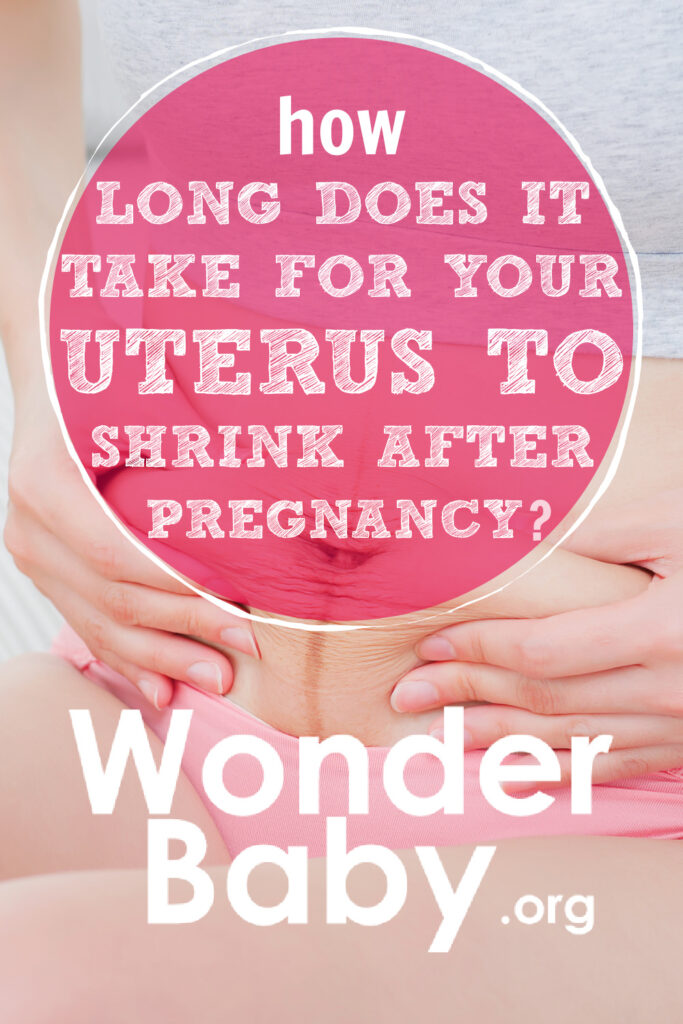
The information WonderBaby provides is not intended to be, and does not constitute, medical or other health advice or diagnosis and should not be used as such. Always consult with a qualified medical professional about your specific circumstances.
Related Posts
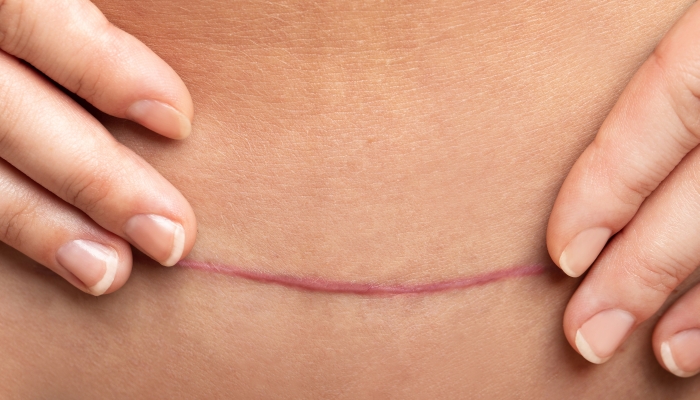
Pregnancy
How To Deal With an Ingrown Hair on a C-Section Scar
Ingrown hairs on a C-section scar can be treated using a warm compress or mild exfoliation. Infected ingrown hairs may require antibiotic treatment.
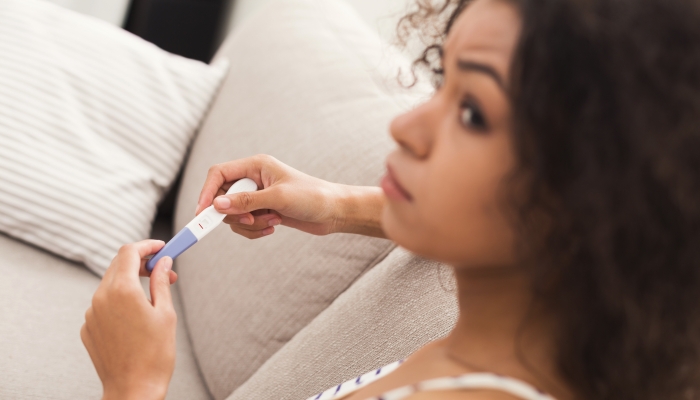
Pregnancy
What’s a Dye Stealer Pregnancy Test?
A dye stealer pregnancy test usually means that your hCG levels are very high, which is typically considered a good sign for pregnancy.

Pregnancy
Can Yelling Cause a Miscarriage?
Yelling alone can not cause a miscarriage. However, maternal stress can cause high blood pressure, preterm labor, and other health problems.